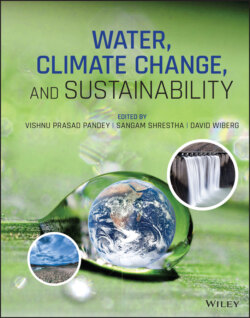Читать книгу Water, Climate Change, and Sustainability - Группа авторов - Страница 27
2.4. INTEGRATED RIVER BASIN MANAGEMENT FOR SDG6 IMPLEMENTATION
ОглавлениеIWRM and integrated river basin management (IRBM) are concurring concepts and compatible with each other as ultimately both concepts seeks to achieve sustainable water resources management and water security in an integrated manner. The basic difference is that IRBM seeks to focus on implementing IWRM principles on the basis of better coordination amongst operating and water management entities within a river basin (NARBO 2009). IRBM is rather specific to basin’s problems and sustainable priorities such as conservation or preservation of aquatic ecosystem and prevent degradation of water resources (quantity and quality). IWRM on the other hand is rather broad and provides guiding principles for managing water resources in general. So IRBM could be understood as a meaningful step towards operationalizing IWRM. IRBM is IWRM at the basin scale which captures an integrated and coordinated approach to the planning and management of natural resources of a river basin by considering a wide array of social and environmental interconnections in a catchment/watershed context (Hooper 2010). In addition to social, economic and environmental sustainability, IRMB also aims to realize common principles of IWRM such as integration (of land and water), cross‐sector collaboration, and stakeholder participation. Due to a high degree of similarity, and on the grounds of simplicity, subsequent discussion therefore treats IWRM and IRBM as same concepts.
Most countries in Asia have adopted national water policies and legislation that advocate IWRM in river basins (Isnugroho and Nielsen 2014). The river basins approach has been used to setup legal and institutional mechanism under various titles such as basin commissions, catchment councils, public RBOs, and corporate RBOs, among others (Isnugroho and Nielsen 2014; UN Environment 2018). Implementation is evolving towards collaboration between central and local governments, businesses and civil society, activating water‐related benefits to serve national and local needs. The councils (or committee) is established to expand and support interagency coordination, stakeholder collaboration, or conflict resolution. Public RBOs are under integral part of the government with strong legitimacy, while corporate RBOs enjoys their autonomy in decision making and financial strength (Isnugroho and Nielsen 2014).
A fresh perspective to mobilize existing RBOs for the implementation of SDGs, starting from water related targets, is needed. For that to happen we need to revisit on the basics and search for most practical answers. It is true that a river basin is an appropriate unit for the integration to address multiple issues related to water such as downstream and upstream issues, quantity and quality, surface water and groundwater, and land use and water resources in a practical manner. The essence of the river basin approach is that a whole water cycle is taken into account. This need to revisit river basin from water cycle perspective is quite relevant considering the comprehensiveness of SDG6 and its interlinkages with multiple SDGs. In fact, one of the important message of the “Yangon Declaration: The Pathway Forward” is to “integrate rainwater, rivers, groundwater, glaciers, oceans and ecosystems, where relevant, into water cycle analysis and related policies at the river basin level” (APWF 2017). However, of particular concern include institutional capacity of the RBOs at the local level where resources and actions targeting SDGs will take place (UN Environment 2018). How RBOs could hit refresh and align their water management strategies along the opportunities offered by SDGs is critical. This could be done by examining the real case situation and thereby identify opportunities and challenges for building a basin wide strategy for implementing water related targets of SDGs.
An assessment on the relevancy of implementing SDGs at the river basin level is yet to be found in terms of opportunities and challenges. Following section, therefore examines relevancy and associated issues for a river basin approach of implementing SDG6 by taking the example of the Lower Mekong Basin (LMB).
